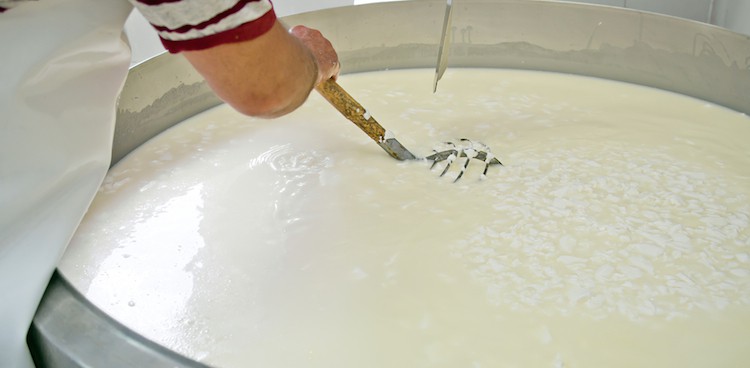
Why do cheesemakers heat milk?
Cheesemakers heat the milk, whether it be raw or pasteurized, as the first step of the cheesemaking process to create a desired temperature for lactic acid bacteria (LAB) to thrive. LAB consume lactose present in milk and produce lactic acid, which acidifies the milk and inhibits the growth of potentially harmful bacteria. Like any living organism, bacteria require a certain temperature range to live and flourish. The specific temperature range depends on the type of bacteria. Milk leaves a cow’s udder at around 100°F. So if a cheesemaker were to milk his or her cows and make cheese right away, potentially no heating would be necessary as long as the LAB is tolerant of that temperature, and most are. The tricky part is that animals have to be milked twice a day. So unless the cheesemaker wants to make cheese twice a day, some of that milk has to be carried over to the next milking. Cheesemakers typically refrigerate the milk for future use. Therefore, it would need to be heated up again to reach a desired range for LAB.
Feature Photo Credit: Shutterstock



